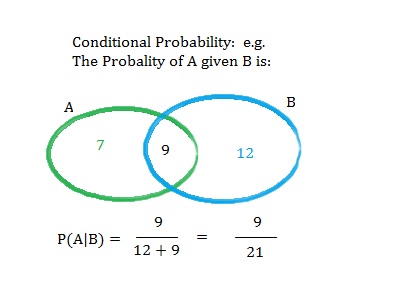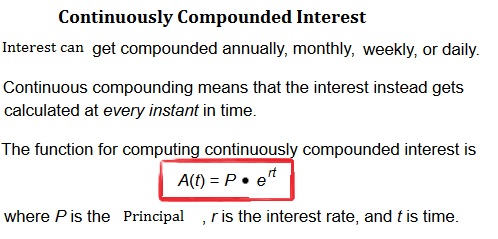
| The Point
- Slope form of the line which has a slope of m and which passes through the point (x1, y1) is: |
 |
|
|
| Probability Formulas |
|
 |
 |
| Conditional Probability | P(A|B) = the probability that A occurs given
that B has occurred |
| OR = + (For Disjoint , or Mutually Exclusive events) | P(A or B) = P(A) + P(B) |
| AND = * (For Independent events) | P(A and B) = P(A) * P(B) |
| Union and Intersection | The addition rule and multiplication rule often are expressed
with symbols: — Intersection. This
symbol represents two events that occur at the same time: A and B.
(9 in diagram above) — Intersection. This
symbol represents two events that occur at the same time: A and B.
(9 in diagram above) — Union. This symbol means that for two events, one or the other
or both occur: A or B. (7, 9, 12 in the diagram above)
— Union. This symbol means that for two events, one or the other
or both occur: A or B. (7, 9, 12 in the diagram above)Using these symbols, the addition rule and multiplication rule can be written as: P(A or B) = P(A U B) = P(A) + P(B) P(A and B) = P(A  B) = P(A) * P(B) B) = P(A) * P(B) |
| More Generally, If the events A and B are not Mutually Exclusive, ie there is "overlap": | P(A or B) = P(A) + P(B) - P(A and B) |
| If A and B are NOT Independent Events: | P(A and B) = P(A) * P(B|A) |
| P(A and B) = P(B) * P(A|B) |
| Ex | |
| Compound Interest Formula |  |
| e=2.718281828 is an approximation since e is an irrational number. |
 |